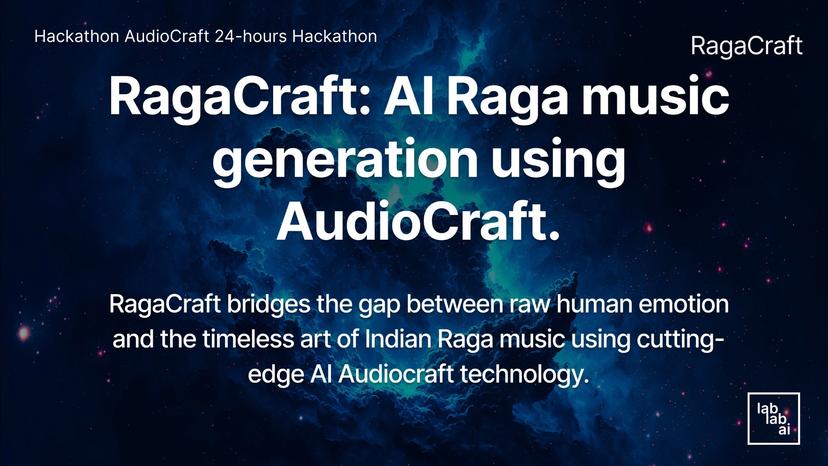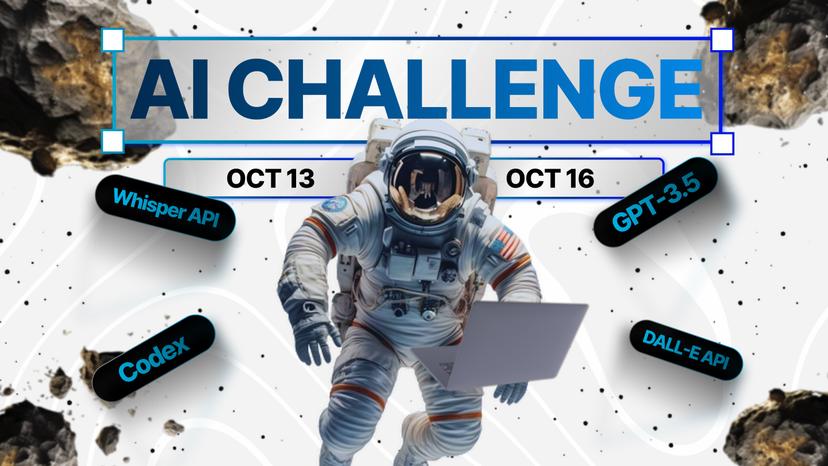.png&w=256&q=75)
Ifra Saleem@Ifra
is under improvement
is under improvement
🤝 Top Collabolators
🤓 Latest Submissions

RAGACRAFT AI MUSIC
Raga Music Generation Pipeline: RagaCraft Our project, RagaCraft, bridges the gap between raw human emotion and the timeless art of raga music using cutting-edge AI. Here's a deeper dive into the underlying process: Customer Interaction: Users interact with our platform, sharing their current emotions and contextual information. For example, "I am feeling romantic today. It is Valentine's Day. I'd like a song to suit the mood." JavaScript Selection: Our system, powered by JavaScript, scans the user's input to select an appropriate raga that resonates with the given emotion. OpenAI Integration: To add depth and specificity, RagaCraft sends a refined request to OpenAI: "Generate a text-to-music prompt for a single romantic raga. Include parameters such as tempo, scale, pitch, and rhythm to optimize the romantic mood. Define ideal values for these features." OpenAI's Response: The API, enriched with musical knowledge, replies with precise musical direction. For instance, "For a romantic setting, employ the Hindustani raga Kamboji. Utilize a medium-slow tempo, major scale, and a high pitch with low undertones. The rhythm should be gentle with a 4/4 signature. Dynamics can vary, with crescendos and decrescendos, ensuring a light texture and smooth timbre." Audiogen Transformation: The detailed prompt from OpenAI is fed into Audiogen, which processes it and crafts a song that encapsulates the user's emotions. Delivering the Experience: Our user interface then presents the generated raga song to the user, completing a journey from raw emotion to personalized musical expression. Through RagaCraft, we're redefining the way users experience and interact with traditional music forms in the age of AI.
31 Aug 2023

LLM enhanced Medical Notes
Working with medical notes puts a significant strain on healthcare professionals. The volume of findings is constantly increasing, driven by advances in medical technology and an aging population. These notes encompass a wide range of information, including clinical assessments, treatment plans, diagnostic test results, and progress reports. Navigating through this wealth of data demands meticulous attention and consumes valuable time that could be allocated to direct patient care. Medical findings are extensive, diverse, and complex, reflecting the intricacies of human health and the multifaceted nature of medical conditions. The diversity poses a challenge for healthcare workers, who must assimilate and synthesize this information to provide the best possible care. As a result, healthcare professionals spend a significant amount of time searching through these findings. They meticulously comb through records, striving to extract the most relevant information while ensuring nothing critical is overlooked. Yet, despite their best efforts, the sheer volume and complexity of medical notes can lead to instances where crucial details may inadvertently go unnoticed. This is where large language models step in as powerful tools to augment healthcare workflows. With their ability to rapidly process and comprehend vast amounts of text, they can swiftly analyze medical notes and extract pertinent information. By doing so, they assist in streamlining the information retrieval process, allowing healthcare professionals to allocate more time to direct patient interactions and clinical decision-making.
16 Oct 2023
.png&w=640&q=75)
.png&w=640&q=75)

.png&w=640&q=75)

